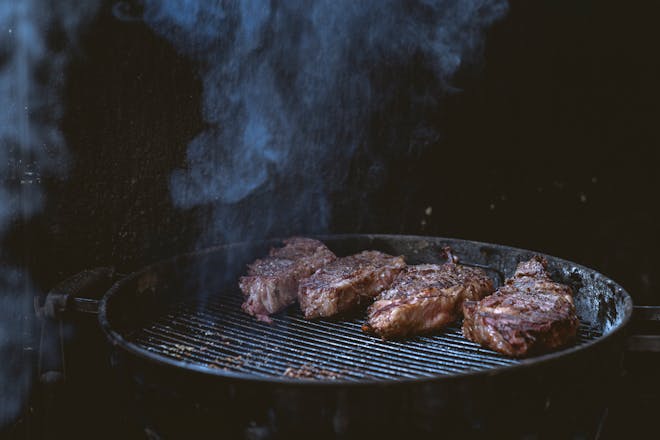Reverse Sear Steak on Grill: Master the Technique
Every steak enthusiast knows that achieving the perfect steak is an art form, and incorporating the reverse sear technique can elevate your grilling game to new heights. Reverse sear steak on grill is not just a cooking method; it’s a revelation for anyone looking to nail that ideal crust and juicy, evenly cooked interior. Here’s how to master this technique for a steak that’s sure to impress.
What is Reverse Sear?
The reverse sear is a method that starts with slow-cooking the steak at a low temperature and finishing it off with a high-heat sear. This method is ideal for thick-cut steaks, typically an inch and a half or more, which can benefit from a more gentle approach to reach the perfect level of doneness without overcooking.
Choosing Your Steak
Before you fire up the grill, selecting the right cut of steak is crucial. Look for high-quality, thick cuts such as ribeye, porterhouse, or New York strip. These cuts have the ideal marbling and thickness that work well with the reverse sear method.
Preparing Your Grill
To reverse sear steak on a grill, you’ll need to set up two zones: one for indirect, low-temperature cooking and another for direct, high-heat searing. If you’re using a charcoal grill, arrange the coals on one side to create a hot zone and leave the other side coal-free. For gas grills, simply turn on half of the burners to a low setting and leave the other half off.
Seasoning Your Steak
Season the steak generously with salt and pepper or your favorite steak seasoning. The seasoning will help form the delicious crust that makes reverse seared steak so appealing.
Slow-Cooking the Steak
Place your steak on the cooler side of the grill and close the lid. The goal is to cook the steak slowly until it reaches an internal temperature of about 10-15 degrees Fahrenheit below your desired level of doneness. Use a meat thermometer to monitor the temperature, aiming for 120°F for rare, 130°F for medium-rare, and 140°F for medium.
Flipping the Steak
Halfway through the slow-cooking process, flip the steak to ensure even cooking. Continue to monitor the temperature, as the thickness of the steak will affect the cooking time.
Resting Before Searing
Once the steak reaches the target temperature, remove it from the grill and let it rest. This allows the juices to redistribute and gives you time to crank up the heat on your grill for the final sear.
The High-Heat Sear
Place the steak on the hot side of the grill for the searing stage. You’re looking for a quick, intense sear to form a flavorful crust. It should only take a minute or two per side, depending on the heat of your grill. Watch for flare-ups and move the steak as necessary to avoid charring.
Final Resting
After searing, transfer the steak to a cutting board and let it rest for a few minutes. Resting allows the juices to settle, ensuring a moist, tender steak when sliced.
Slicing and Serving
Slice against the grain for maximum tenderness, and serve immediately. The reverse sear steak on grill should have a crisp crust, a beautifully even medium-rare to medium doneness throughout, and a burst of flavor in every bite.
